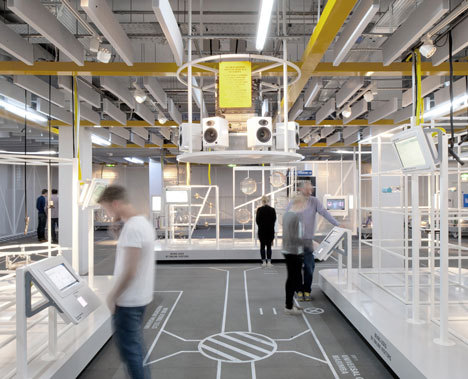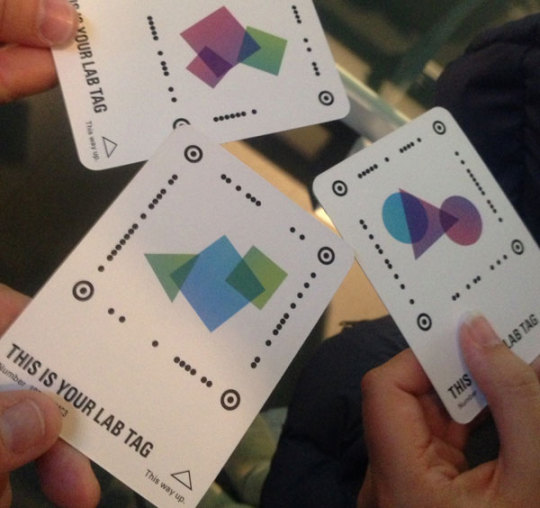Link
I’m currently working on a Laser Projector, I’m starting with something basic (i.e. a projector that draws ‘flower’ like patterns to the beat). Obviously, one of the requirements for the projector is motor control, so this was my first attempt at using a H-Bridge.
It’s a very simple project, but…
98 notes
·
View notes
Photo
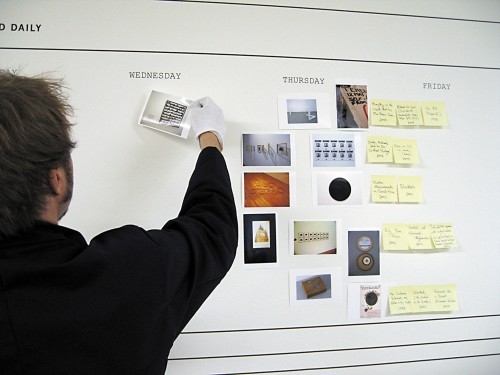
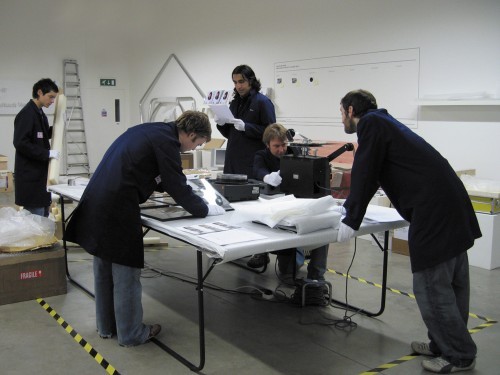


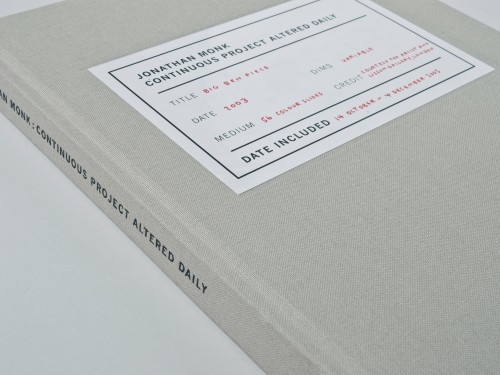
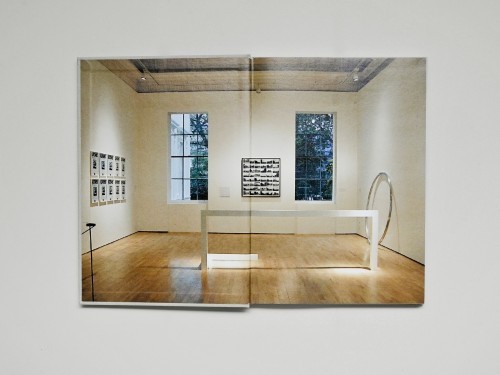

Continuous Project, Altered Daily - An exhibition by Jonathan Monk
"The ICA’s [London, October 14 - December 4, 2005] exhibition Jonathan Monk: Continuous Project Altered Daily, was the first comprehensive survey of the British artist within the UK. The exhibition featured over 60 artworks made between 1993 and 2005 including paintings, sculptures, installations, photography, as well as film and video works, and provided an extensive overview of the artist’s exceptionally prolific artistic practice.
The title of the exhibition, taken from an artwork by artist Robert Morris made in 1969, describes the concept behind the display of the works and its ever-changing form of presentation. An art storage installed in the Lower Gallery of the ICA contained all the artworks in the exhibition, while individual works, were changed on a daily basis, and presented in the Upper Gallery. Consequently Continuous Project Altered Daily not only traced the development of Monk’s practice through the sequence of different works but, as a permanently transforming and changing exhibition, it also challenged the static dynamics of traditional art presentation and interpretation. " From Specific Object
The catalogue for the exhibition follows the same style of archival information, using date labels etc. as a visual theme throughout. It was designed by APFEL
1 note
·
View note
Text
The relationship between collecting and archiving the data for the research (3D images) is something that I think we can and should exploit to create some interesting, evolving visuals. This could be a generative graphic that could be created using Processing to 'grow' according to data collected from participants, or something more tangible and physical that participants could be directly involved with. The processing option has advantage that the data could remain anonymous and abstract but it might be more visually interesting to use elements created by the participants themselves.
More on this subject later...
#collecting and processing data#processing#generative graphics#data collection#participant led exhibits#design#isobel
0 notes
Photo

Summer rains getting you down? Find a covered spot and make a sandwich (board)! A flashback moment in Temporary Services’ past from 1999 (although we of course are always keen to use these building skills today). (via MSS | Make your own sandwich board)
6 notes
·
View notes
Text
More than a smiley face?
The camera itself is quite an intimidating piece of equipment so in order to make people, children especially, want to participate we need to make it seem engaging and inviting.
A recognised problem when photographing children is getting them to stay still and concentrate on facing in one direction. The only visual marker used at Alder Hey is a print out of a smiley face. If we tackle this particular problem as part of the temporary exhibit then it may have the potential to benefit the users of 3dMD equipment in hospitals long term.
How to improve patient experience in 3dMD apparatus?
It would be useful to collect some qualitative research from participants at FACT as to their opinion of the experience, what the equipment reminds them of etc. The same questions could be asked to children and parents in the photography department at Alder Hey. This collected information could then be compared and used to consider how the experience could be improved overall.
This is quite a simple example but it was used at a collaborative project I took part in at the Southbank Centre to create a newspaper in 48 hours. These cards were used as a way of collecting information from passers by, with the premise that their input would be used in the newspaper. The theme of the weekend was Power & Production, and within the boundaries of those few questions, it produced some very imaginative responses.

#qualitative research#patient experience#imagination#3dMD#distraction technique#design thinking#isobel
0 notes
Photo

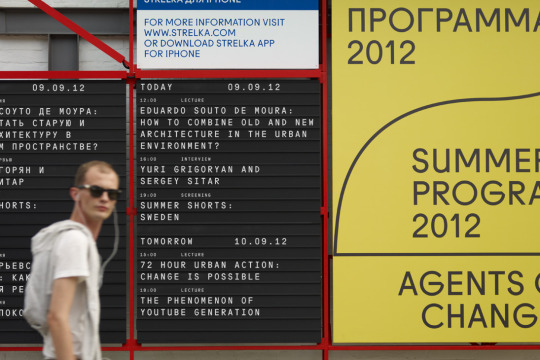

Flexible signage system developed as part of the rebrand of the Strelka Institute by ok-rm. Useful inspiration if we are thinking of having part of the installation that changes dependent on the themes being discussed at relevant events and workshops
1 note
·
View note
Photo
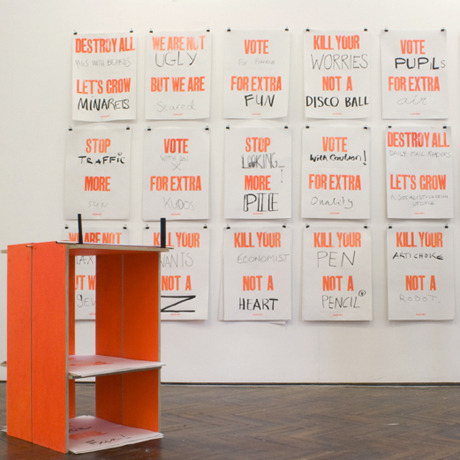
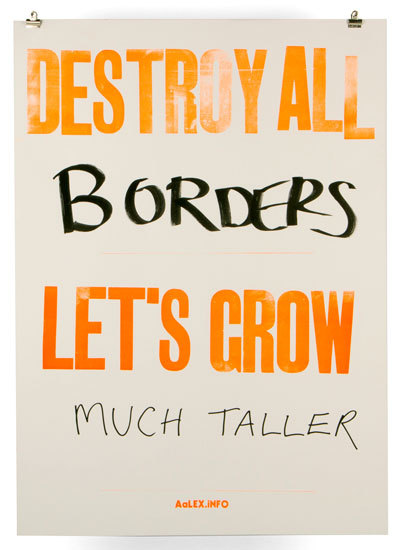

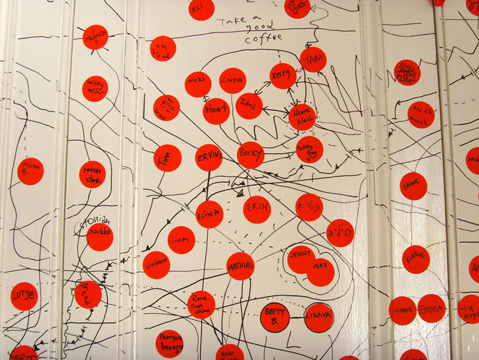
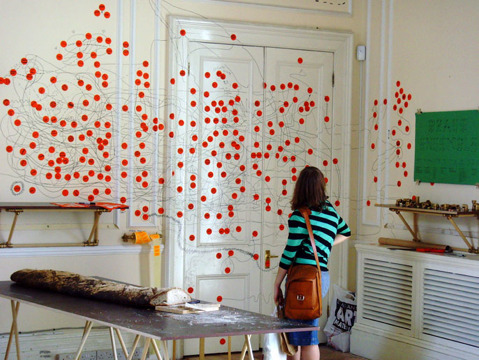
I love Alex Bettler's approach to participant led works, the work's fun, memorable and has great personality.
"the trick is to find the right balance between the parameters that you set, and the space allowed for improvisation."
“the importance is not in what you say, but in what others understand”
To read the full interview with Alex Bettler, go to: confessionsofadesigngeek
0 notes
Photo


Mandible - by Jake Evill
"Anatomy project, the aim was to recreate the jaw accurately while representing it from an objective point of view."
0 notes
Photo



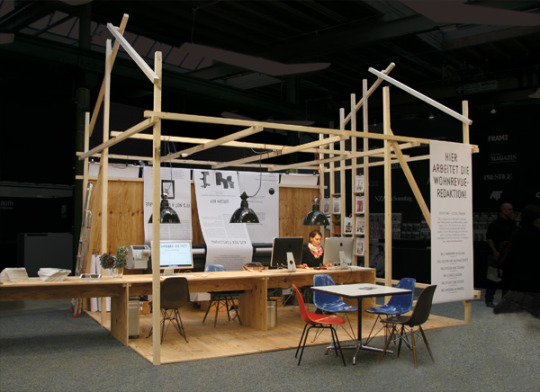
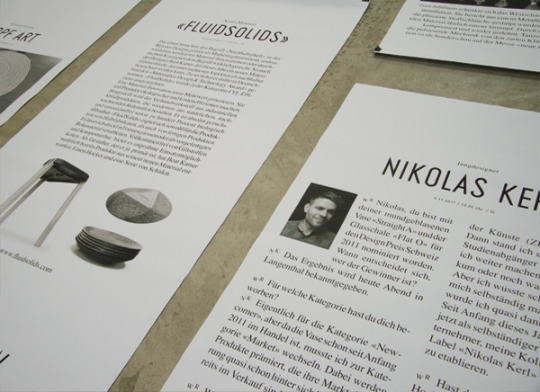

I love the 'work in progress' nature of this exhibit. As the work is produced the main features of the exhibit are updated, which makes the onlooker feel more involved in the project, even if they are just observing. This is the kind of atmosphere that we need to create with headspace.
(From Pirol)
7 notes
·
View notes
Photo
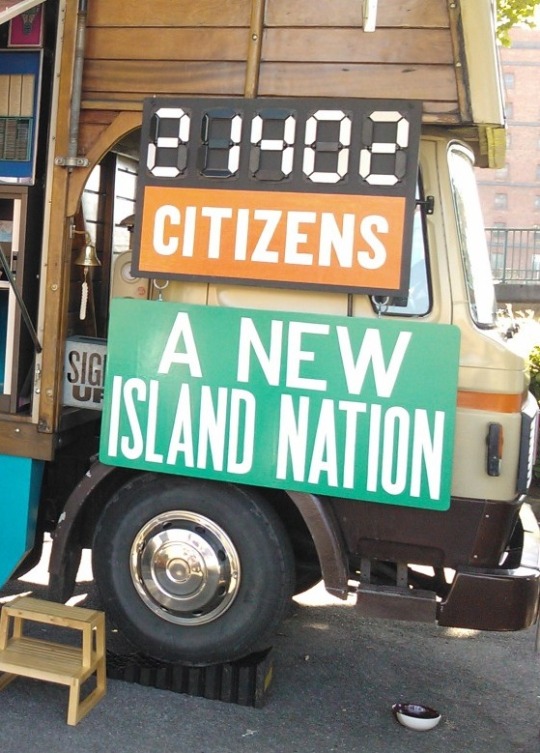
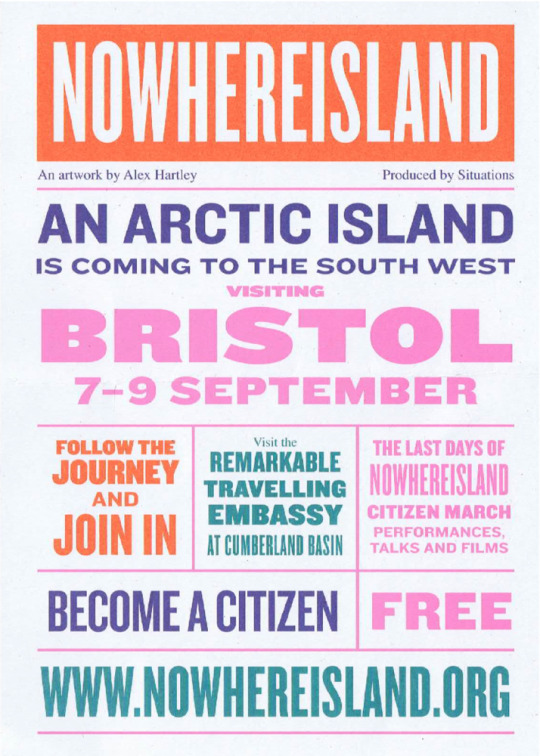

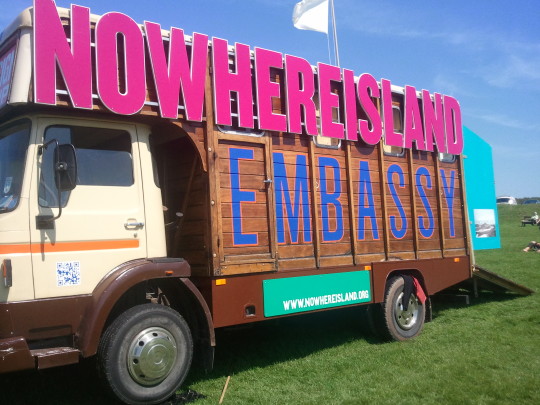


Nowhereisland
(see previous post for more info)
0 notes
Text
GE Adventure Series - How design thinking improved paediatric patient experience
(Watch from 06.10)
Doug Dietz designs medical imaging equipment such as MR scanners and CT scanners. When visiting one of his machines in a hospital environment, he saw it from the perspective of a paediatric patient. He learnt that nearly 80% of children have to be sedated to go in MRI machine. This drastically changed the way that he viewed the machine that he had designed.
He then set about redesigning the entire experience of being scanned, and came up with the 'Adventure Series' where scanners are transformed into pirate ships, space ships and jungle safaris.
These transformations produced fantastically positive results and reduced the number of children that had to be sedated to under 10%.
To learn more about the design transformation from Doug:
http://tedxtalks.ted.com/video/TEDxSanJoseCA-2012-Doug-Dietz-T
0 notes
Photo
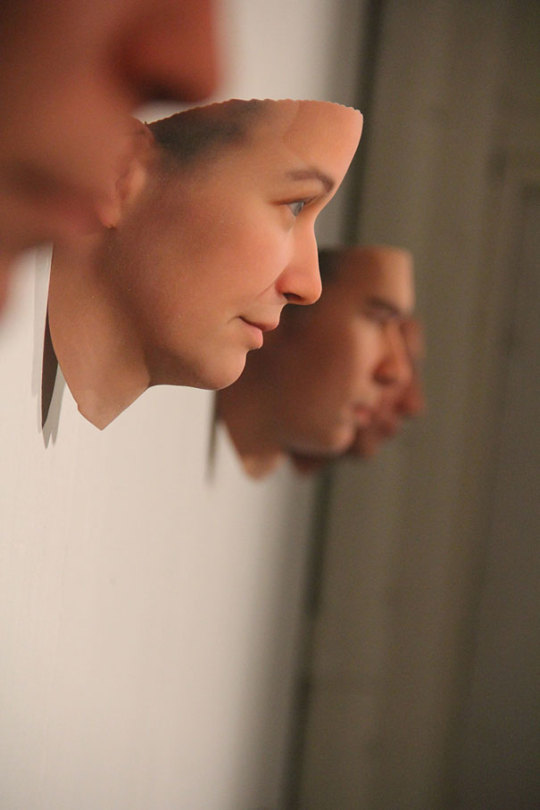
Hello, Stranger
Our identities shape us. Even our physical features can give away a lot of information about ourselves, such as, our level of vanity, how often we sleep, how often we exercise, and so on.
But what about a strand of our hair, or the gum we just chewed? Apparently, these insignificant little pieces can also give away a substantial amount of information about ourselves. Artist Heather Dewey-Hagborg creates 3D recreations of people’s faces, using DNA she finds on…old chewing gum and cigarette butts. It is incredible to think that these pieces of garbage, after a few moments in contact with our DNA, can still hold onto our genetic makeup, and then even recreate, albeit not an exact likeness, of ourselves. Almost as if the gum that you just spit out isn’t really gum, but a piece of flesh.
But more importantly; how is this even possible? The artist explains that while in her lab, she puts the DNA through a process called PCR (Polymerase Chain Reaction), which helps her to study specific areas of our genomes, called Single Nucleotide Polymorphisms. After extracting the necessary amount of data, she sends it off to a specialist lab, where strands of DNA are created from the aforementioned pieces of information. These strands of DNA are then fed into a 3D printing program, ready for printing!
There are still some things that the DNA-infested pieces of gum and cigarettes cannot tell us, such as the age of the anonymous person (she casts each model as a 25 year old), but it’s still chilling to see the portraits, wondering if you’ll stumble upon a neighbour, or friend.
Or maybe these portraits are truly anonymous, and aren’t even representations of real people; merely the artists own creations in a lab, like a biological puzzle.
-Anna Paluch
371 notes
·
View notes
Text
Hichem Driss - Inside out project - I exist (in some way) at the Bluecoat
Currently showing at The Bluecoat, the photography exhibition 'I exist (in some way)' tackles themes of identity, oppression and freedom of expression.
Hichem Driss exhibits work from inside out.
'In 2011 Driss travelled throughout Tunisia capturing portraits that illustrated the diverse society and landscape of his home in the weeks ans months after the revolution. His work is part of inside out, an ongoing global participatory art project started by French artist JR. the portraits are made into posters and are then exhibited in the photographers' own communities. These exhibitions are documented, archived and avaliable online at www.insideoutproject.net'
Check it out, it's wonderful!

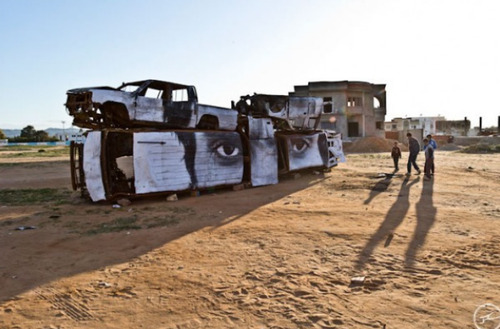
For me inside out ticks all the boxes! It has a beautifully designed and accessible website, it's interactive, it's inspiring and above all it has a powerful 'story' at it's foundations.
I love the idea of giving our participants an image to take away to do something specific with. For example to fly post them around Liverpool City centre (with council permission of course.)
Another option is to get the images digitally displayed on a large screen off site in Liverpool city centre. The images would be on a constant cycle that is updated every time a new photograph is taken.
We could use the opportunity to get local businesses involved by asking shops/cafes etc. if they are willing to participate in the project by allowing people to display their photographs.
Getting the images outside of FACT and into the city centre will get people talking about 'Head space' and encourage participation.
Rachel Armstrong
1 note
·
View note
Photo

Collective Coverings, Communal Skin (2012, Liverpool Biennial, FACT)
It would be great if our installation had even half as much visual impact as this did last year. The artwork grew over time through public participation, which is what we are also trying to achieve with headspace
0 notes

